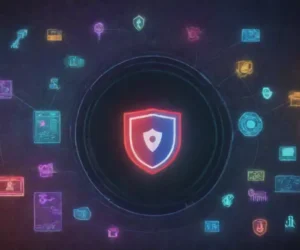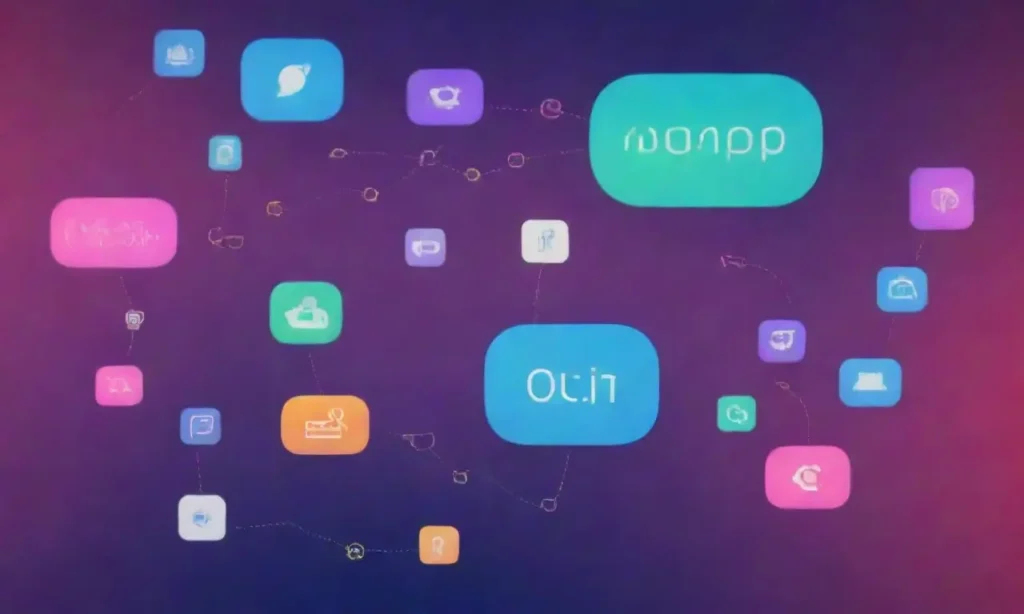
From Rule-Based to AI-Driven: Evolving Chatbot Algorithms

Introduction
The landscape of digital communication has undergone a dramatic transformation over the past few years, largely due to the advent of chatbots. Initially designed as simple, rule-based systems, chatbots now incorporate advanced techniques powered by artificial intelligence (AI), leading to more sophisticated and responsive interactions. This evolution not only enhances user experience but also expands the functionality of chatbots into various fields, including customer service, healthcare, education, and beyond.
In this article, we will explore the journey from rule-based chatbots to the modern, AI-driven frameworks that power contemporary conversational agents. We'll discuss the underlying algorithms, the importance of natural language processing, and how machine learning has become pivotal in shaping the future of chatbot technology. By examining these topics, readers will gain a comprehensive understanding of how chatbots have evolved and what this means for future applications.
The Genesis of Rule-Based Chatbots
Rule-based chatbots were some of the earliest forms of automated interaction available to users. These chatbots operate by following a set of predefined rules, designed to respond to specific types of inquiries. Essentially, they rely on scripted responses that are triggered by certain keywords or phrases recognized in a user’s input. For instance, if a user asked about business hours, a rule-based chatbot might automatically provide the pre-set opening and closing times without the capacity to engage in a more complex conversation.
A significant limitation of rule-based systems is their rigidity. Since they can only respond based on the pre-defined rules, any inquiry outside these rules often led to a dead-end or a generic fallback response. This can lead to user frustration, as they may not receive the information they are seeking. Additionally, rule-based chatbots are unable to learn from interactions, making them ineffective in situations that require adaptability or contextual understanding. Thus, while rule-based frameworks served their purpose by simplifying responses, they lacked the depth and flexibility required for more complex interactions.
The Role of Neural Networks in Modern Chatbot FunctionalityMoreover, rule-based chatbots typically require extensive programming efforts to cover a wide range of topics effectively. Developers find themselves in a continuous cycle of creating new rules for every possible user query. This not only limits the efficiency of deployment but also increases the time needed for updates. As businesses began to recognize these limitations, the pressing need for more adaptable and intelligent systems became increasingly clear.
The Rise of AI-Driven Chatbots
The introduction of AI into the realm of chatbots has revolutionized the way these systems function. Unlike their rule-based predecessors, AI-driven chatbots leverage powerful algorithms and large datasets to understand and respond to user queries more naturally. By utilizing techniques from natural language processing (NLP) and machine learning, AI chatbots have the ability to interpret and generate human-like responses, expanding their capacity to handle nuanced conversations.
AI-driven chatbots utilize machine learning algorithms that allow them to adapt and improve over time. By processing vast amounts of conversational data, these chatbots can identify patterns, discern user intents, and enhance their understanding of context. This analysis of data enables them to offer relevant suggestions, resolve customer inquiries, and even predict user needs. Furthermore, through continuous training, AI chatbots can refine their responses, making them increasingly effective with every interaction.
One of the most significant advancements in the development of AI chatbots is the integration of deep learning architectures, such as transformers, which power systems like OpenAI's GPT-3. These models significantly enhance the chatbot's ability to generate coherent and contextually appropriate responses. By mimicking human-like conversation, they are better equipped to provide informative, engaging, and personalized experiences for users.
The transition from rule-based to AI-driven systems also opens up a variety of channels for interaction. Today’s AI chatbots can engage with users through text, voice, and even visual formats, diversifying the range of touchpoints for communication. Whether integrating into social media platforms, mobile applications, or websites, AI chatbots can create seamless experiences across multiple environments.
Key Technologies Behind AI Chatbots

Natural Language Processing (NLP)
Natural Language Processing is a foundational technology that underpins AI-driven chatbots. By enabling machines to understand and interpret human language, NLP facilitates the analysis of user input, allowing chatbots to answer queries accurately. NLP algorithms work by breaking down sentences into their grammatical components, identifying the intent behind the user's words, and discerning sentiment and context.
For instance, through techniques like tokenization, lemmatization, and entity recognition, chatbots can extract crucial pieces of information from a user's message. By understanding these elements, chatbots can generate more accurate and relevant responses. Moreover, NLP allows chatbots to perform sentiment analysis, enabling them to gauge the emotional tone of a user’s interaction and tailor their responses accordingly. This emotional intelligence greatly improves the user experience by providing a more empathetic interaction.
Machine Learning
Machine Learning is another critical component that has propelled chatbots from their rule-based origins. AI-driven chatbots rely heavily on supervised learning algorithms to be trained on large datasets filled with conversational examples. These datasets may consist of customer service interactions, social media conversations, or customer feedback, allowing chatbots to learn patterns and optimize their response strategies over time.
Beyond supervised learning, chatbots also implement reinforcement learning, where they learn from feedback provided by users. Successful interactions allow the chatbot to strengthen specific response patterns, while errors prompt necessary adjustments. This feedback loop contributes significantly to the chatbot's continuous learning process, allowing them to improve their accuracy and efficacy in real-time interactions.
Additionally, transfer learning has emerged as a popular approach among AI-driven chatbots. By leveraging knowledge from one domain to enhance performance in another, these chatbots can apply pre-trained models to reduce the need for extensive training on industry-specific language and jargon. This approach allows for quicker deployment of chatbots in various industries, from healthcare to finance, while maintaining high-quality responses.
Enhanced User Interaction
With technologies like NLP and machine learning driving advancements, the way users interact with chatbots has drastically improved. Today, many AI chatbots can seamlessly switch between multiple topics, remember context from previous messages, and engage in rich dialogues just like a human would. They can handle follow-up questions that build upon earlier interactions, ultimately making for a more conversational and organic user experience.
Furthermore, AI-driven chatbots can also support multi-turn conversations where several back-and-forth exchanges seamlessly occur. This capacity allows users to ask complex queries in a more casual and natural way, without the fear of being misunderstood or derailed by the limits of a rule-based system.
The ability to scale interaction while personalizing the experience has also broadened the applications for AI chatbots. They can tailor responses based on user preferences or historical data, moving beyond simple scripted replies to offering customized recommendations and support. Such personalization not only enhances user satisfaction but also significantly increases user engagement with the brand.
Challenges and Future Directions
Despite the remarkable advancements in AI-driven chatbots, several challenges need to be addressed as technology continues to evolve. Among them is the issue of data privacy. As chatbots collect and store user data to provide personalized experiences, there is an increasing concern about how this data is protected and utilized. Organizations must prioritize compliance with regulations such as GDPR and CCPA to ensure that user privacy is respected, and sensitive information is adequately safeguarded.
Another challenge is the potential for bias in AI algorithms. If the data used for training chatbots is unrepresentative or flawed, this can lead to biased responses, which may ultimately alienate a significant portion of users. Ongoing research in de-biasing techniques and implementing diverse datasets can help mitigate this risk and promote inclusivity in chatbot interactions.
Moreover, as the demand for more capable chatbots continues to grow, the competition intensifies. Businesses must strive to create chatbots that not only perform efficiently but also distinguish themselves in a market saturated with similar offerings. Organizations need to continually innovate, adopting new technologies and refining algorithms to stay ahead of user expectations.
As we look toward the future of AI-driven chatbots, advancements in generative AI techniques hold great potential. Such breakthroughs could enable chatbots to generate novel and contextually relevant content, expanding their functionality into areas like personalized marketing and creative writing. The integration of augmented reality (AR) and virtual reality (VR) into chatbot technology might also redefine user experiences, especially in industries that rely heavily on visuals and immersive engagement.
Conclusion
The evolution from rule-based to AI-driven chatbots marks a significant turning point in the way businesses communicate with their customers. This metamorphosis has facilitated an era of intelligent, responsive, and personalized interaction that enhances user experience and drives engagement. Through the integration of advanced natural language processing, machine learning, and deep learning technologies, modern chatbots can handle a wide range of inquiries, understand user intent, and deliver tailored responses seamlessly.
Although there are challenges to navigate, including data privacy concerns and potential biases, the future of chatbot technology is bright. Innovations in generative AI and immersive technologies promise to push the limits of what chatbots can achieve, opening up new avenues for user engagement and interaction.
As we move forward, it is crucial for businesses to harness the capabilities of AI-driven chatbots responsibly. By prioritizing ethical practices and continuously improving chatbot algorithms, organizations can create lasting value for customers and maintain a competitive edge in an increasingly digital world. In this journey of evolution, chatbots will undoubtedly play a pivotal role in shaping how we communicate and interact online.
If you want to read more articles similar to From Rule-Based to AI-Driven: Evolving Chatbot Algorithms, you can visit the Chatbots category.



You Must Read